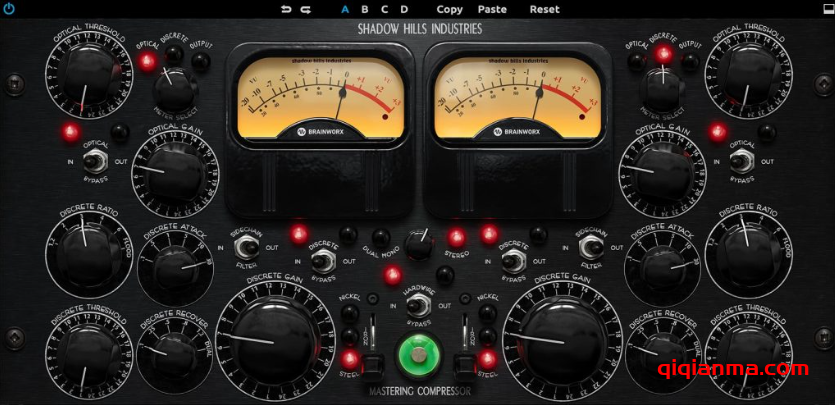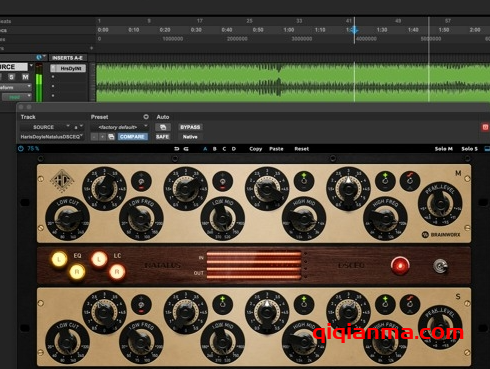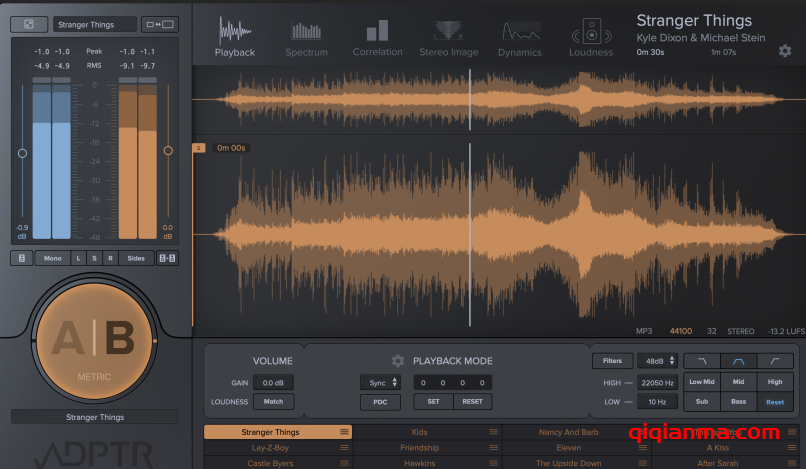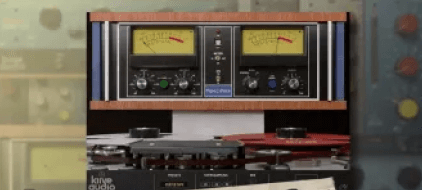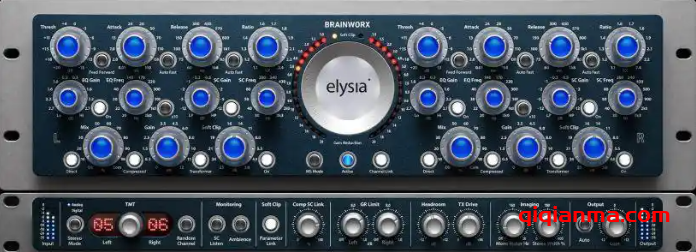
市场上一些最常见的高端磁带机仿真有时可能有点过于微妙,让人不禁要问“这东西开着吗”?这就是为什么 Kiive Audio 的 Tape Face 以有史以来最具特色的专业磁带机之一为蓝本,为数字录音增添了受欢迎的模拟魅力。
三种模式:从有品位的,到微妙的,再到严肃的磁带
在模式 I 中,Tape Face 提供了对爱尔兰制造的磁带机的精确仿真,该磁带机以其令人愉悦的色调而闻名。在这种默认设置下,它提供了比瑞士和美国制造的一些清洁机器更大的声音印记。在模式 II 中,仿真变得明显更加透明,因为需要更轻柔的触感。对于 Lo-Fi 发烧友,模式 III 提供额外的沙砾、饱和度和高端软化,以实现更极端的模拟降级。
不仅仅是模拟
Tape Face 提供了原始模拟磁带机所没有的功能。它为更多的频率曲线和磁头碰撞增加了额外的磁带速度。
想让头部碰撞更显着吗?尝试使用“Low Boost”功能来恢复丢失的底端。想要在不增加增益的情况下获得更多磁带颜色和压缩?只需调高饱和度旋钮。
想要一些真正的魔法吗?“偏置”开关使您的中低频变肥和饱和,同时通过与频率相关的磁带压缩来控制它们。Tape Face 甚至允许您添加立体声宽度或查看应用了多少磁带压缩。
在任何地方试一试
Tape Face 几乎在任何地方都听起来很棒。要获得微妙的磁带饱和度提示,请在混合总线或所有轨道上以 30 或 15ips 尝试模式 II。
在模式 I 中增加薄吉他,然后尝试打开偏置开关并以 15 或 7.5 ips 的速度运行它以获得更丰富的声音。通过使用模式 III 使平行的鼓总线和循环栩栩如生——不要对那个饱和度旋钮感到害羞!
在人声、低音、高打击乐和合成器上尝试这些方法中的任何一种,以调出您喜欢的颜色量。
特点
经典爱尔兰磁带机的模拟建模仿真
CPU 友好的过采样允许您将它放在每个轨道上以模拟通过物理磁带机进行的录音
三种模式:
(I) – 非常适合在添加最小失真的同时获得那种泵感的磁带声音。此设置最适合用于需要驯服的具有大量瞬变的混音总线或鼓。
(II) – 模拟近乎完美校准的磁带机,在驱动输入时具有丝般光滑的高端、低端凸起和非常有用的磁带压缩。非常适合混音总线或任何收尾工作。
(III) – 考虑到 LoFi 制作人。深色和粗糙的磁带饱和度在推动时具有大量增益减少和谐波。
其他功能包括:
偏差:使您的中低频变得肥厚、坚韧和前倾,同时保持对它们的良好控制
磁带速度:通过降低速度来增加高频滚降量和头部撞击的频率
GR 计量:可视化多少压缩你正在应用的
立体声宽度:传播你的声音
低频提升:恢复低饱和度
饱和度:增加磁带压缩和谐波染色,而不会弄乱您的增益分级
Team R2R | 04 Apr 2023 | 87.9MB |包括补丁和注册机
All the vibe of real analog tape… and more
Some of the most common emulations of high end tape machines on the market can be a bit too subtle at times, leaving one to ask “is this thing on”? That’s why Kiive Audio’s Tape Face is modeled after one of the most characterful professional tape machines ever made, adding a welcome dose of analog charm to digital recordings.
Three modes: from tasteful, to subtle, to seriously tapey
In Mode I, Tape Face provides an exacting emulation of an Irish-made tape machine known for its pleasantly colored tone. In this default setting, it offers an even greater sonic imprint than some of the cleaner machines made in Switzerland and the U.S. In Mode II, the emulation becomes significantly more transparent, for when a gentler touch is in order. And for Lo-Fi enthusiasts, Mode III dials in extra grit, saturation and top-end softening for more extreme analog degradation.
More than just emulation
The Tape Face offers features not found on the original analog tape machines. It adds extra tape speeds for a greater number of frequency curves and head bumps.
Want that head bump to be even more significant? Try the “Low Boost” feature to restore lose bottom end. Want more tape color and compression without increasing the gain? Just turn up the saturation knob.
Want some real magic? The “Bias”’switch fattens and saturates your low mids while keeping them controlled with frequency dependent tape compression. Tape Face even allows you to add stereo width or see just how much tape compression is being applied.
Try it on EVERYTHING
Tape Face sounds great just about everywhere. For a hint of subtle tape saturation, try Mode II on mix bus or on all your tracks, in 30 or 15ips.
Fatten up thin guitars in Mode I, and then try flipping on the bias switch and running it in 15 or 7.5 ips for an even richer sound. Bring parallel drum buses and loops to life by engaging Mode III—And don’t be shy with that saturation knob!
Give any of these approaches a try on vocals, bass, high percussion and synths to dial in your preferred amount of color.
Features
Analog-modeled emulation of a classic Irish tape machine
CPU-friendly oversampling allows you to throw it on every track to emulate recording through a physical tape machine
Three modes:
(I) – Perfect for getting that pumpy tape sound while adding minimal distortion. This setting is best used for mix bus or drums with heavy transients that need taming.
(II) – Emulates a near perfectly calibrated tape machine with silky smooth high end, low end bump and a very usable tape compression when the input is driven. Perfect for mix bus or any finishing touches.
(III) – Made with LoFi producers in mind. Dark and gritty tape saturation with heavy Gain reduction and harmonics when pushed.
Additional features include:
Bias: Make your low mids fat, gritty, and forward while keeping them well-controlled
Tape speed: Increase the amount of high end rolloff and the frequency of the head bump by going down in speed
GR metering: Visualize how much take compression you’re applying
Stereo width: Spread out your sound
Low boost: Bring back lows lost to saturation
Saturation: Increase tape compression and harmonic coloration without messing up your gain staging

